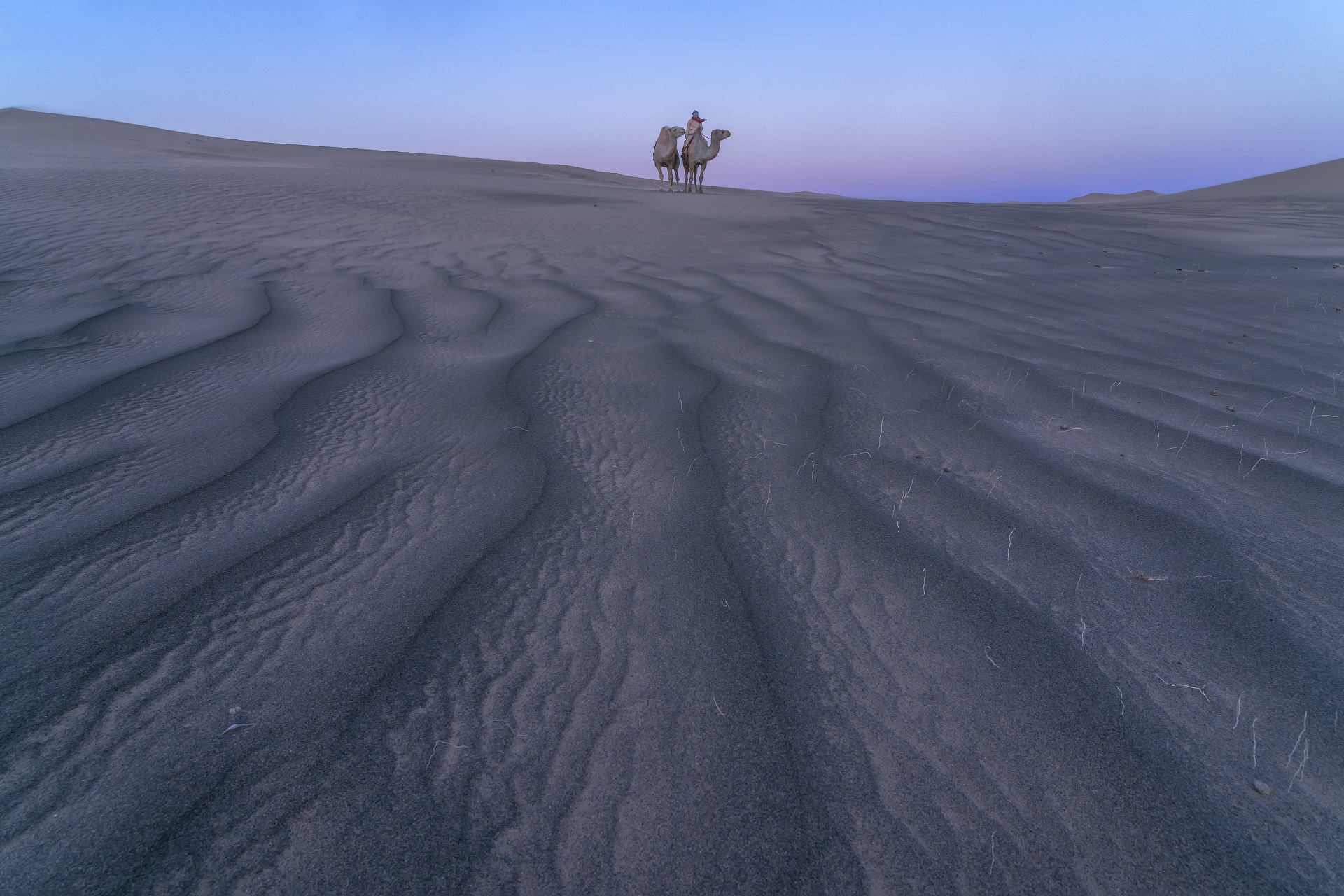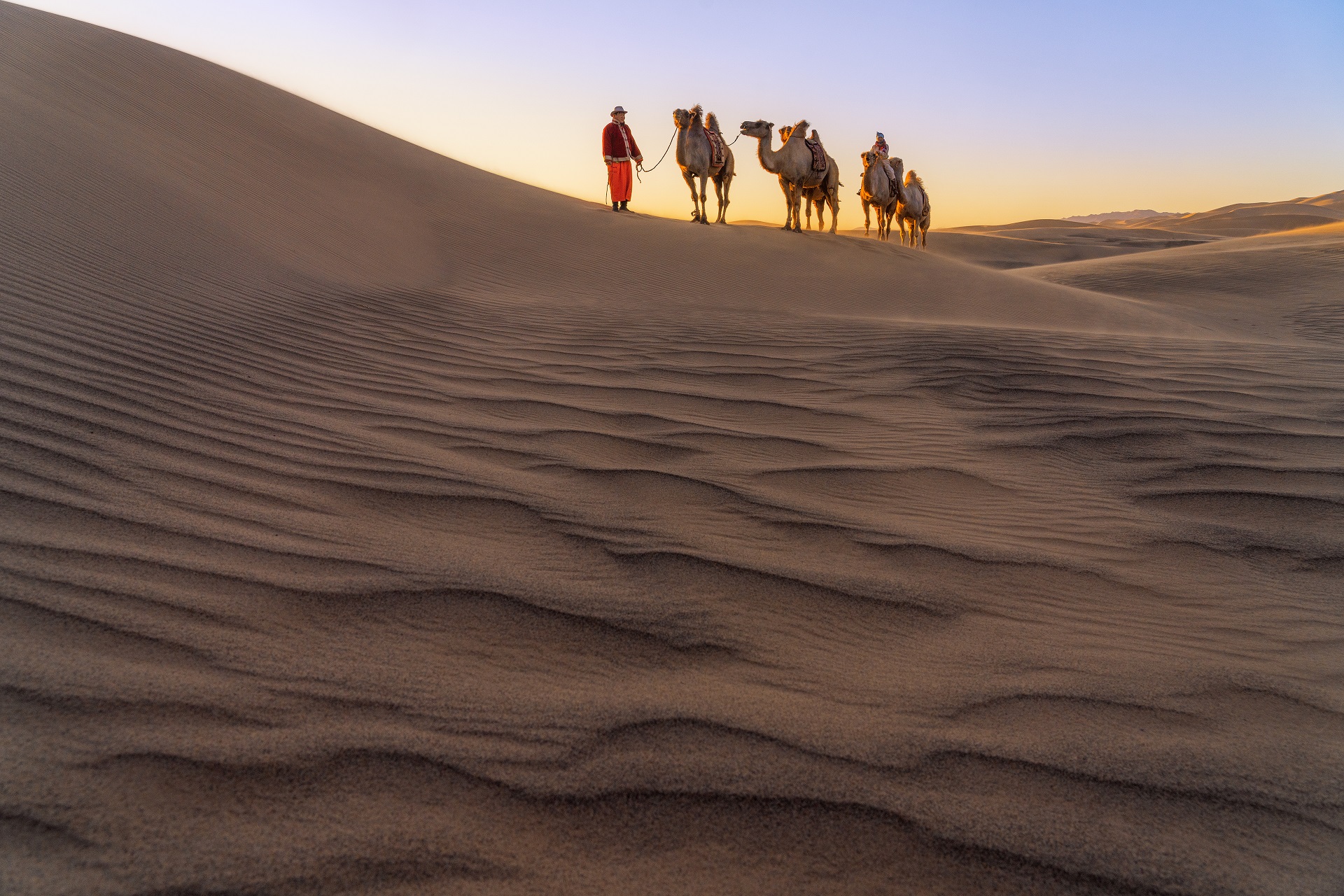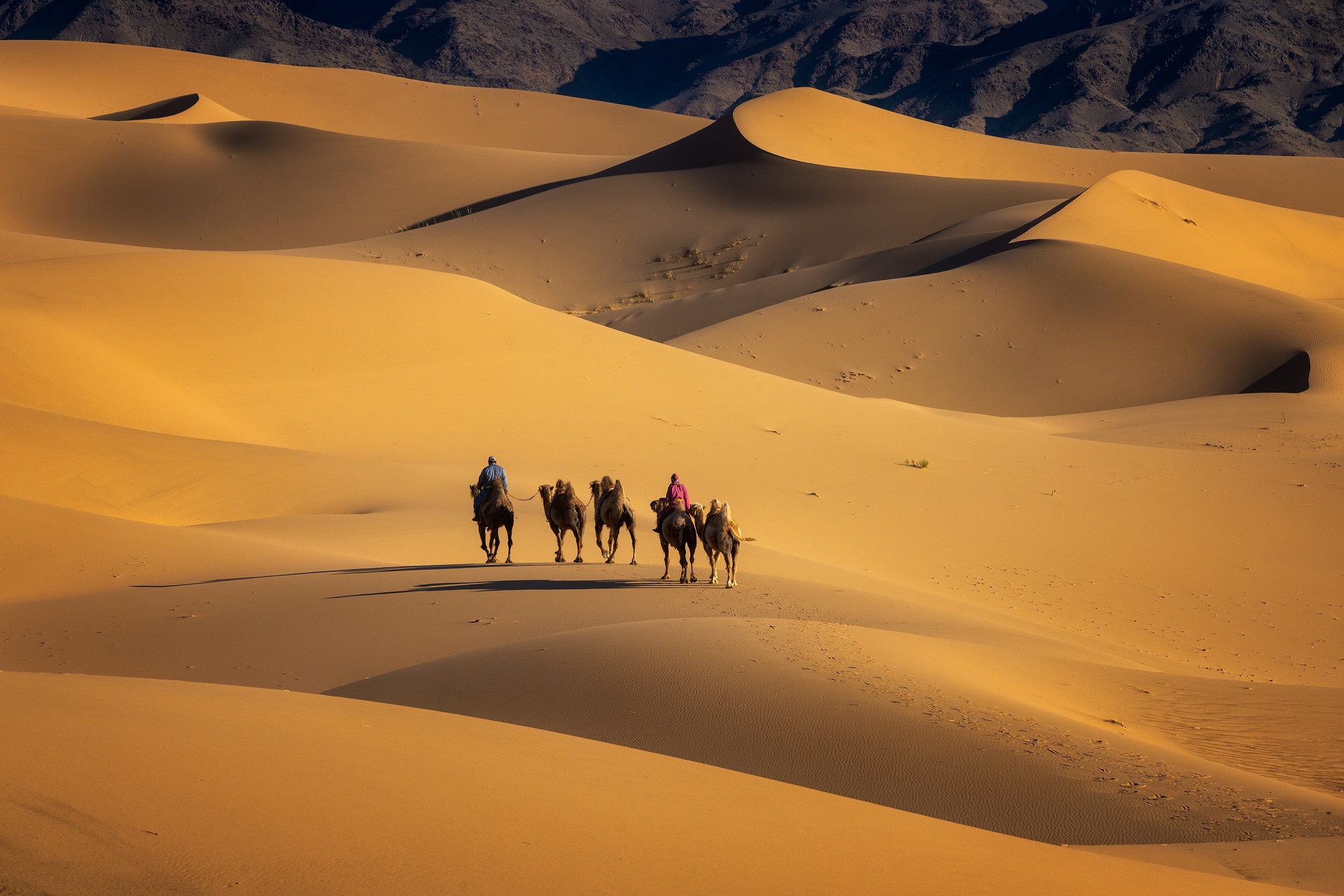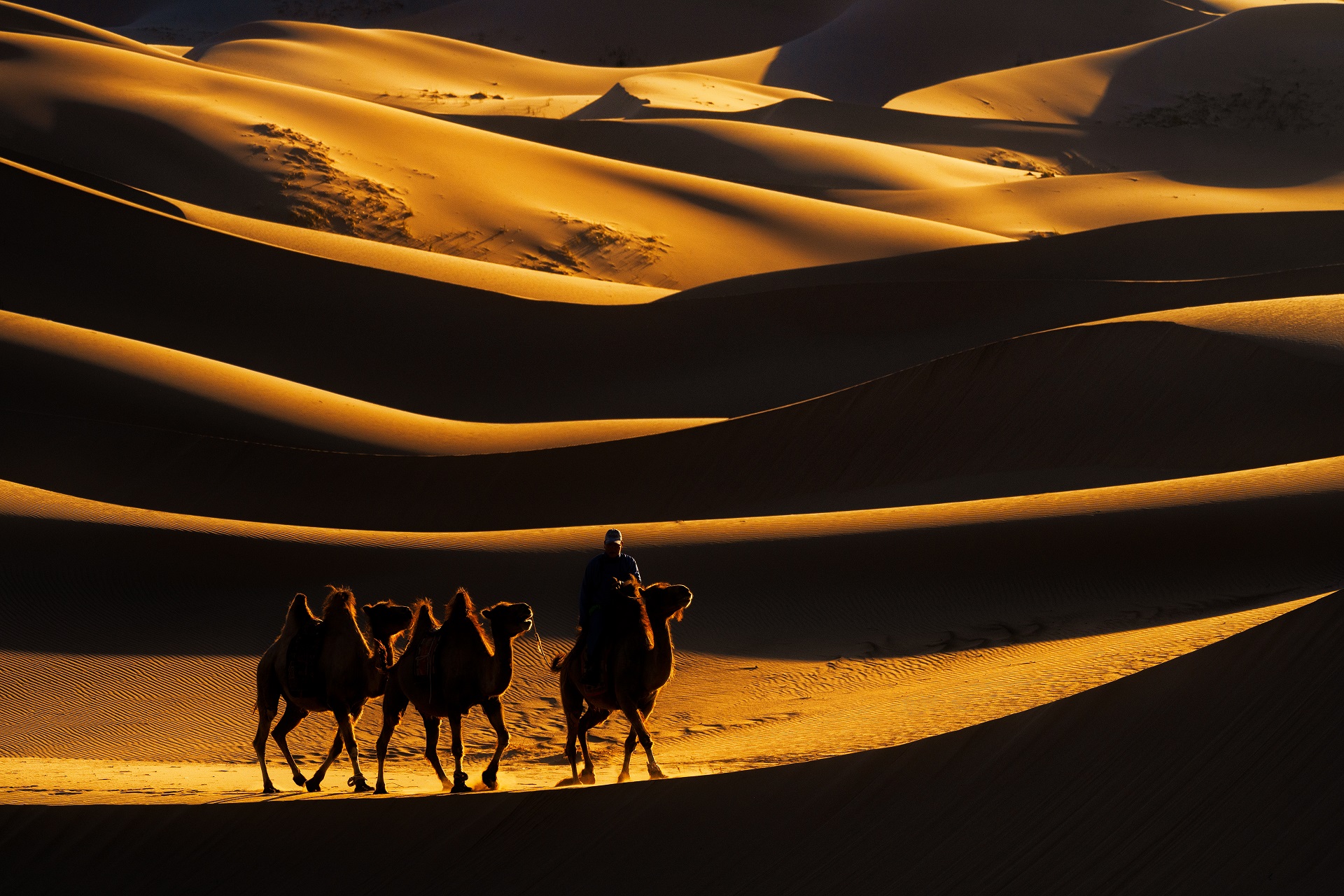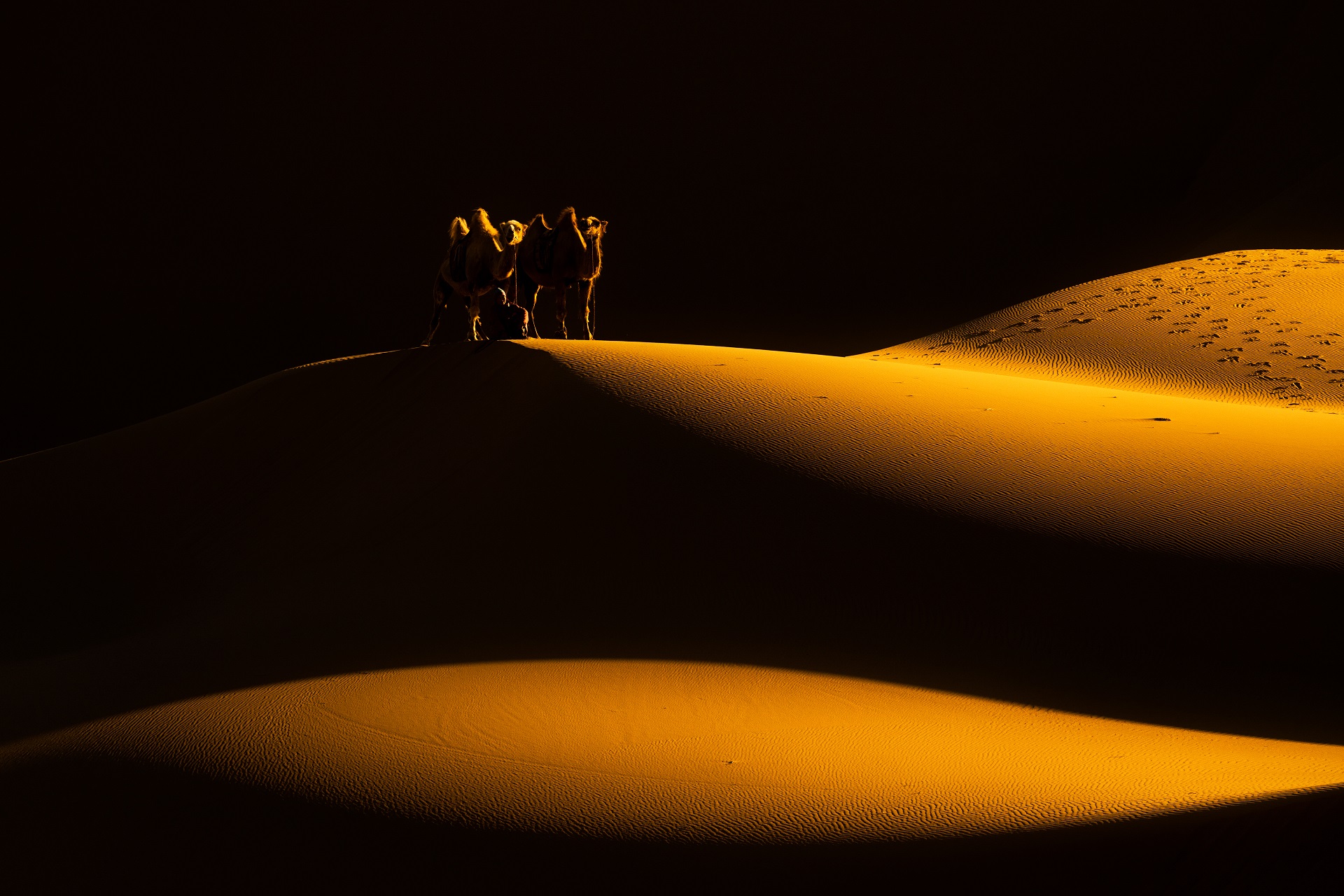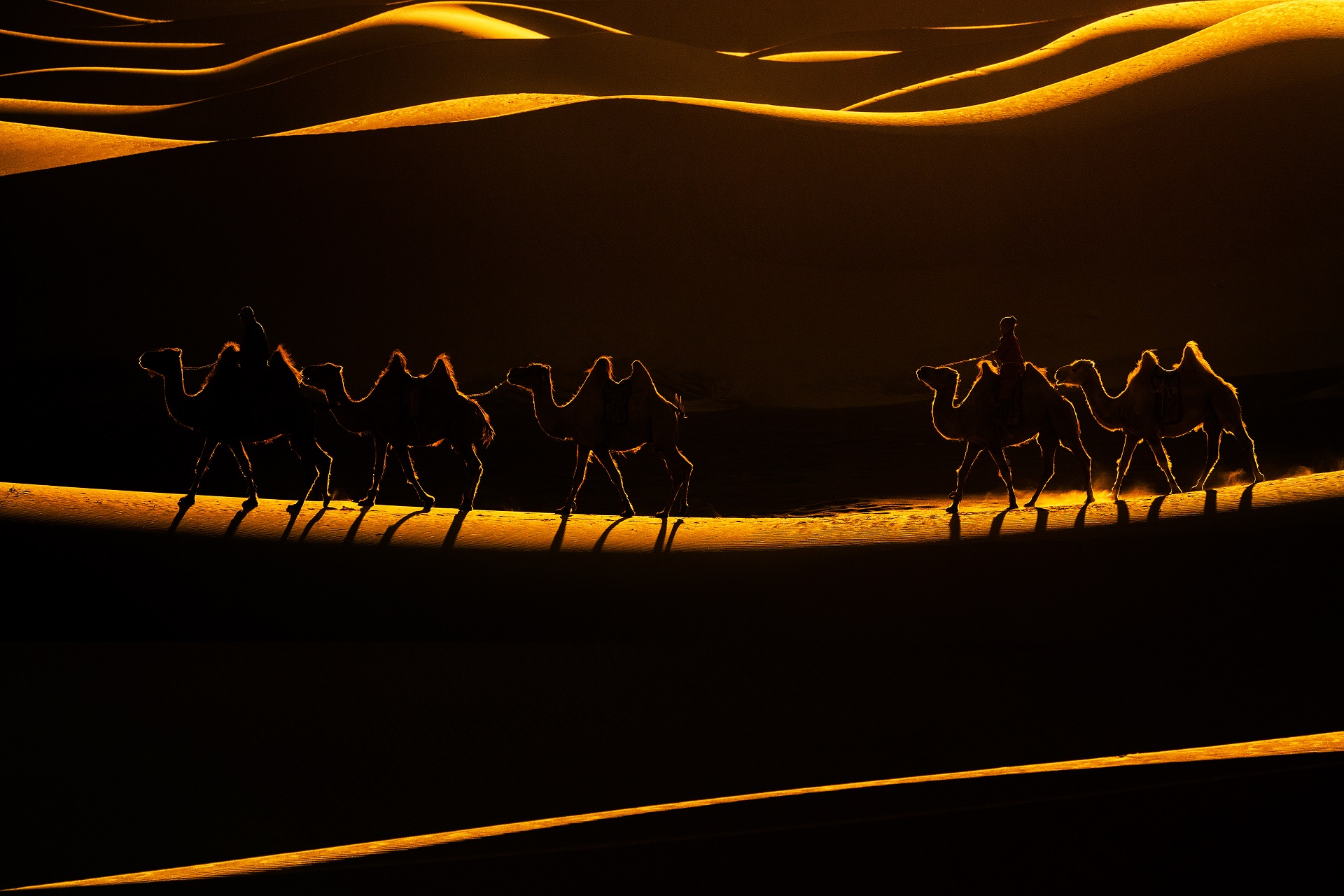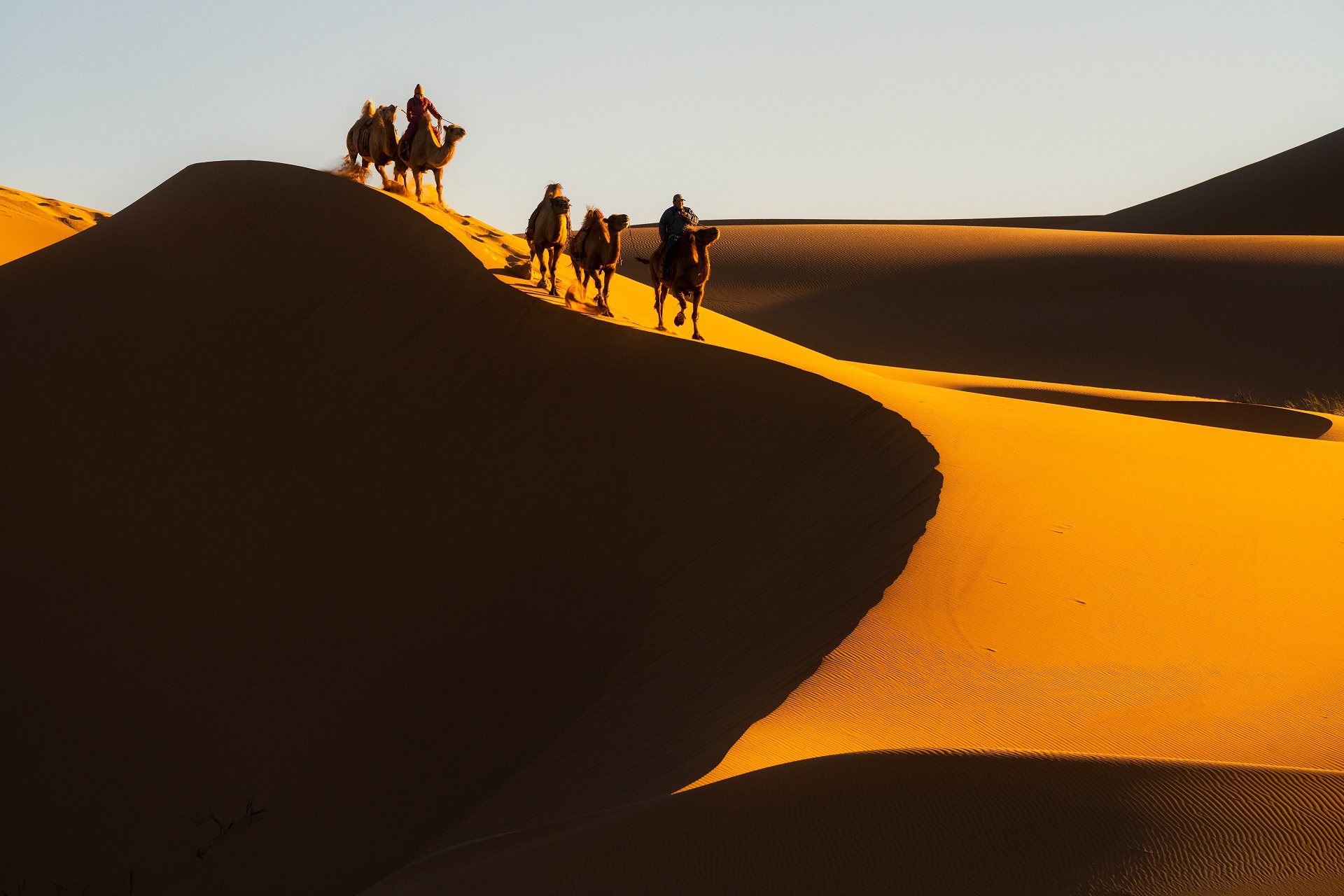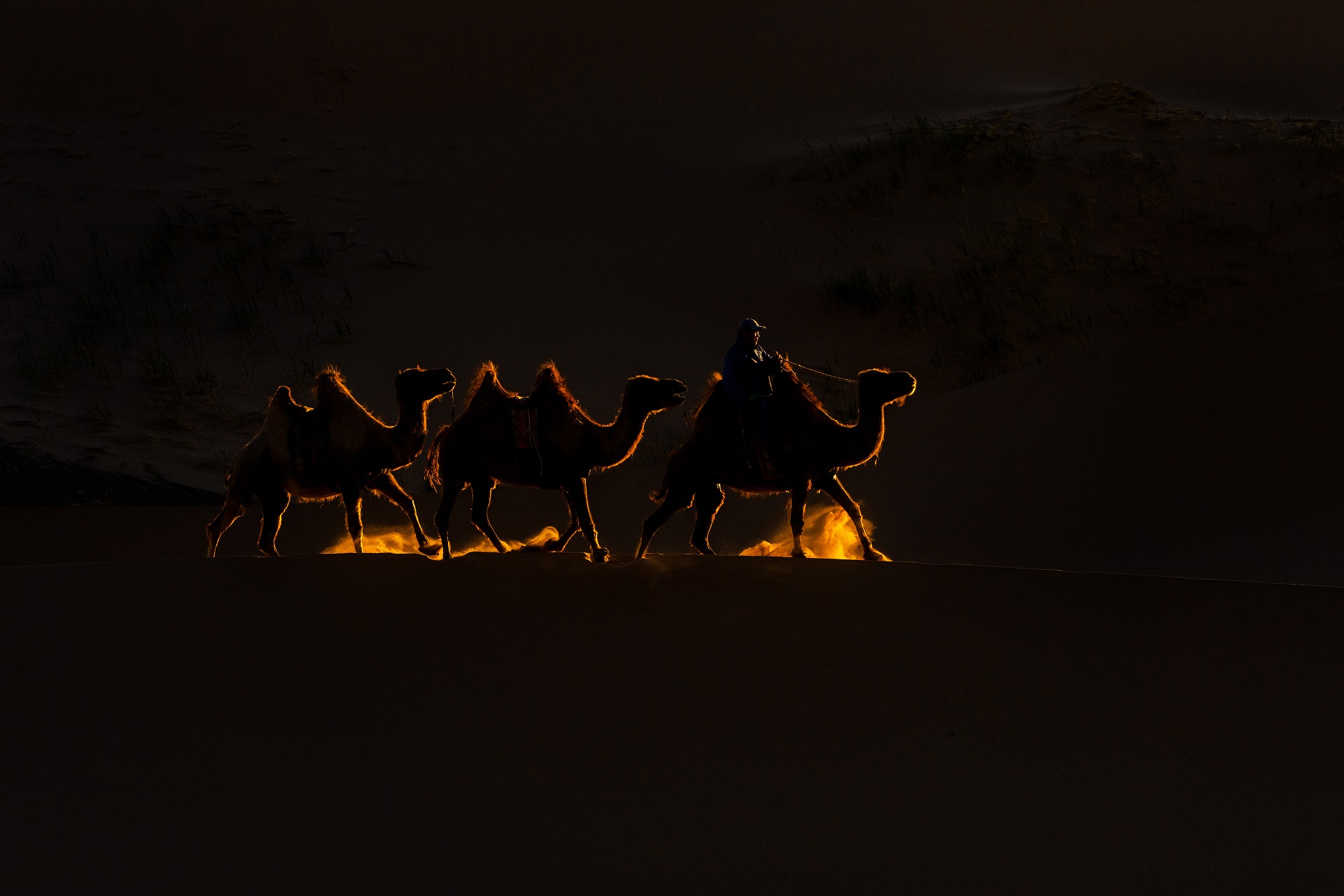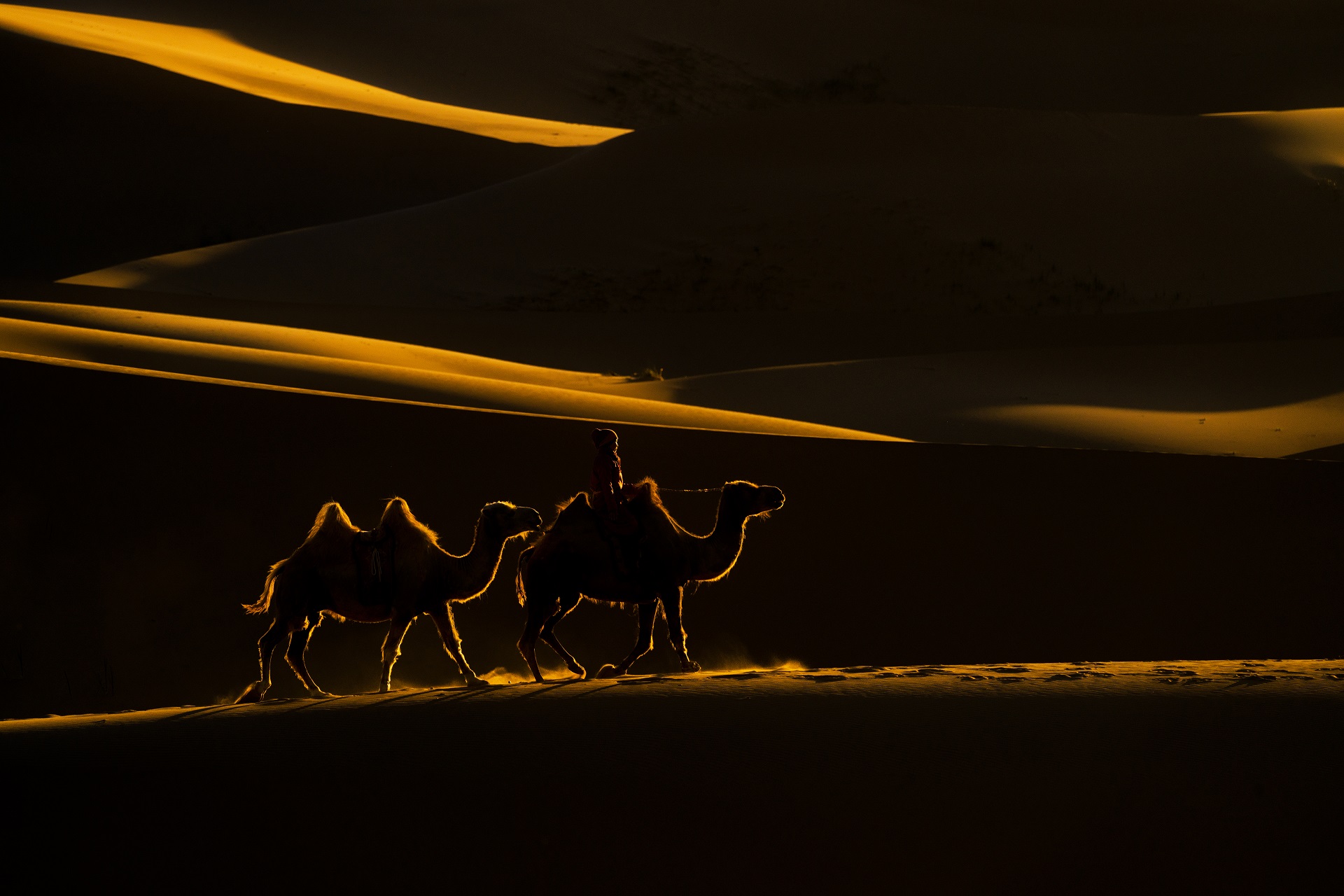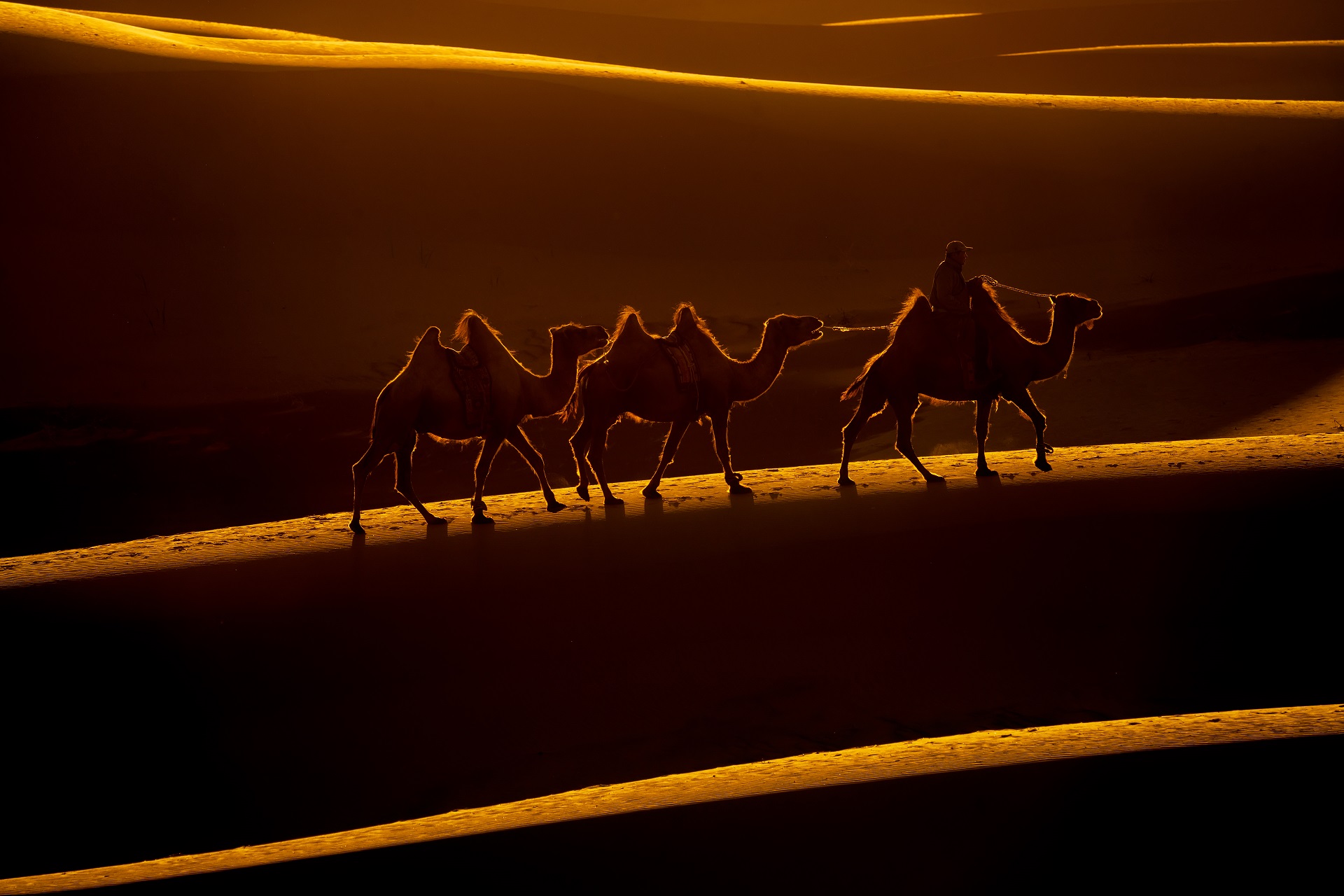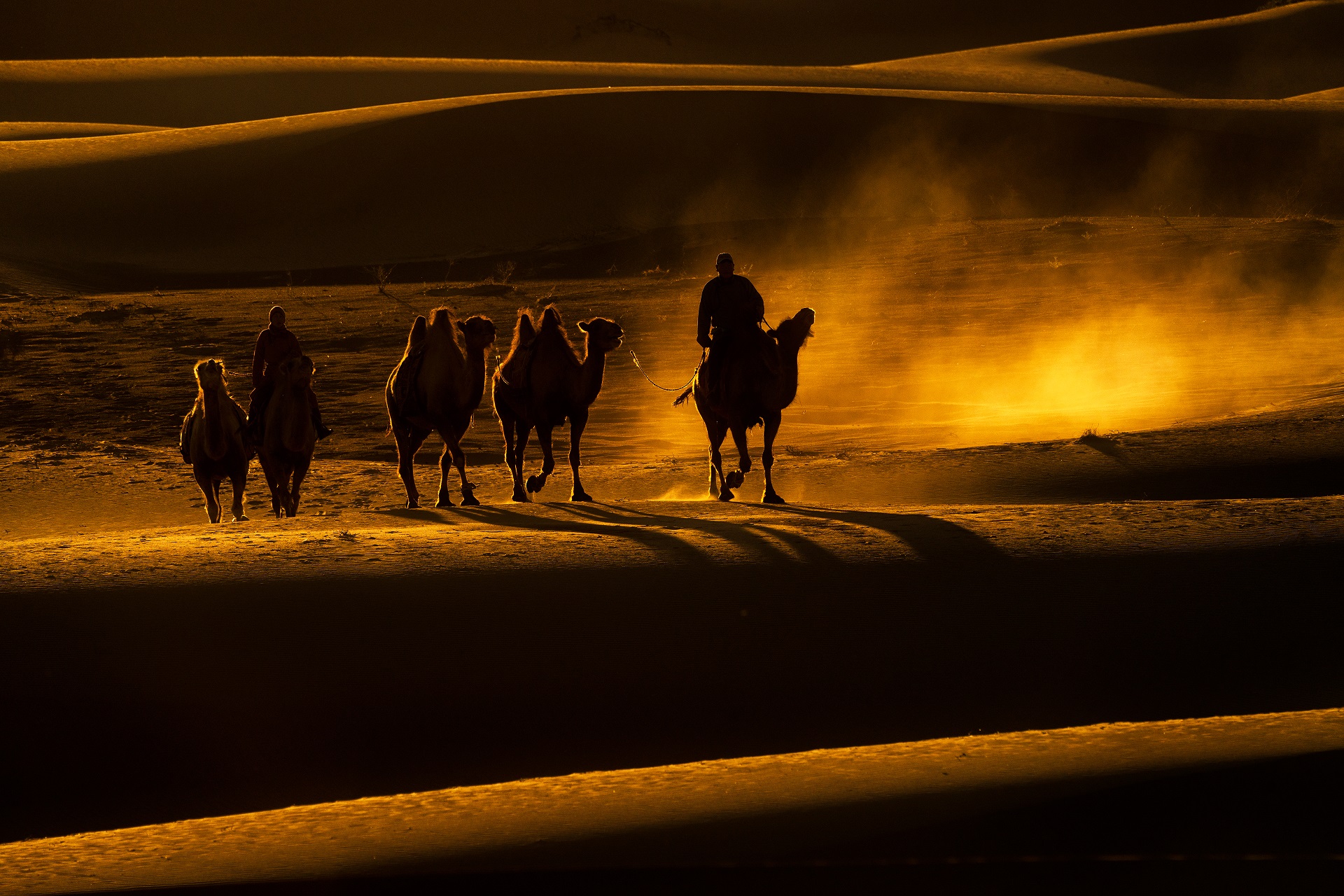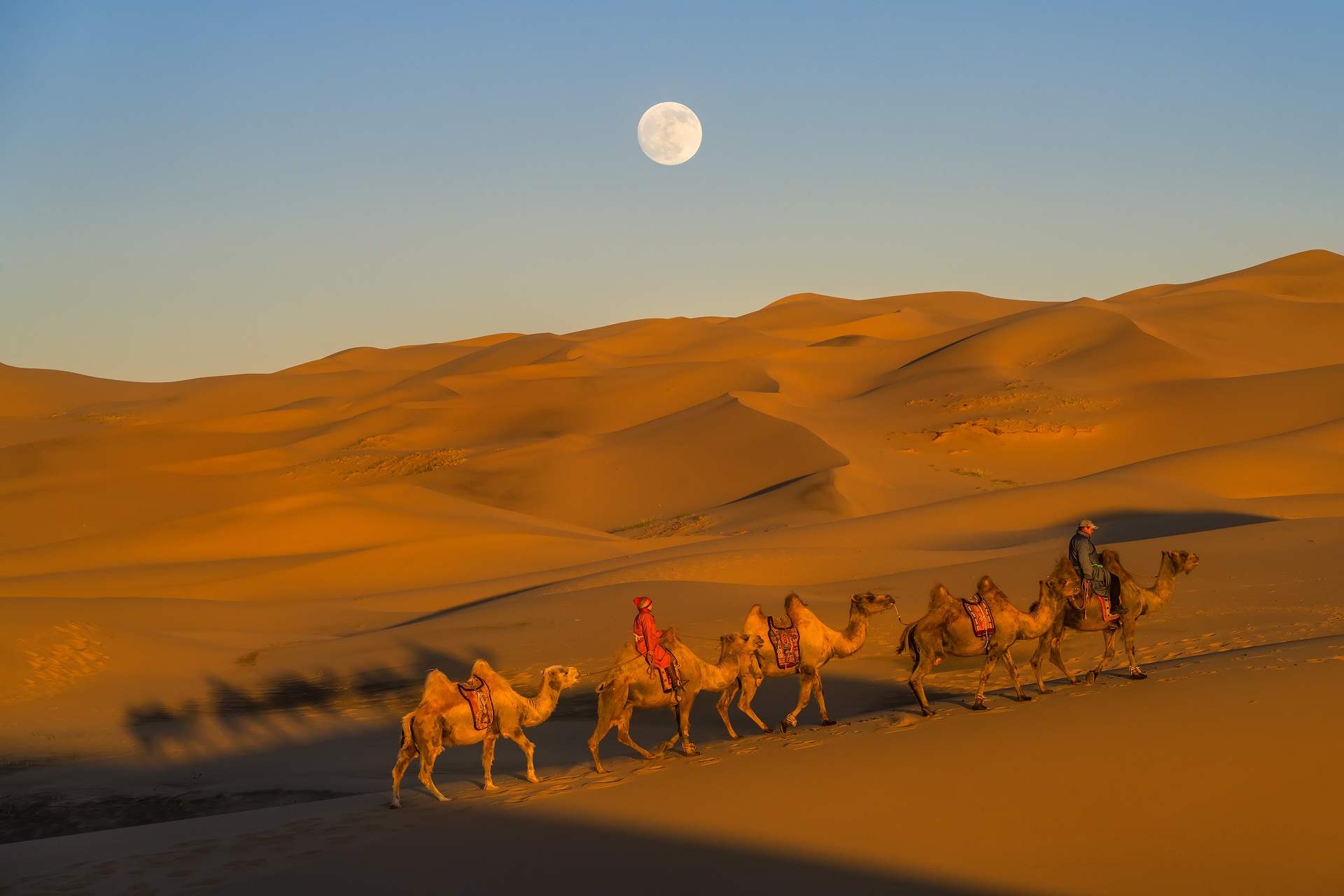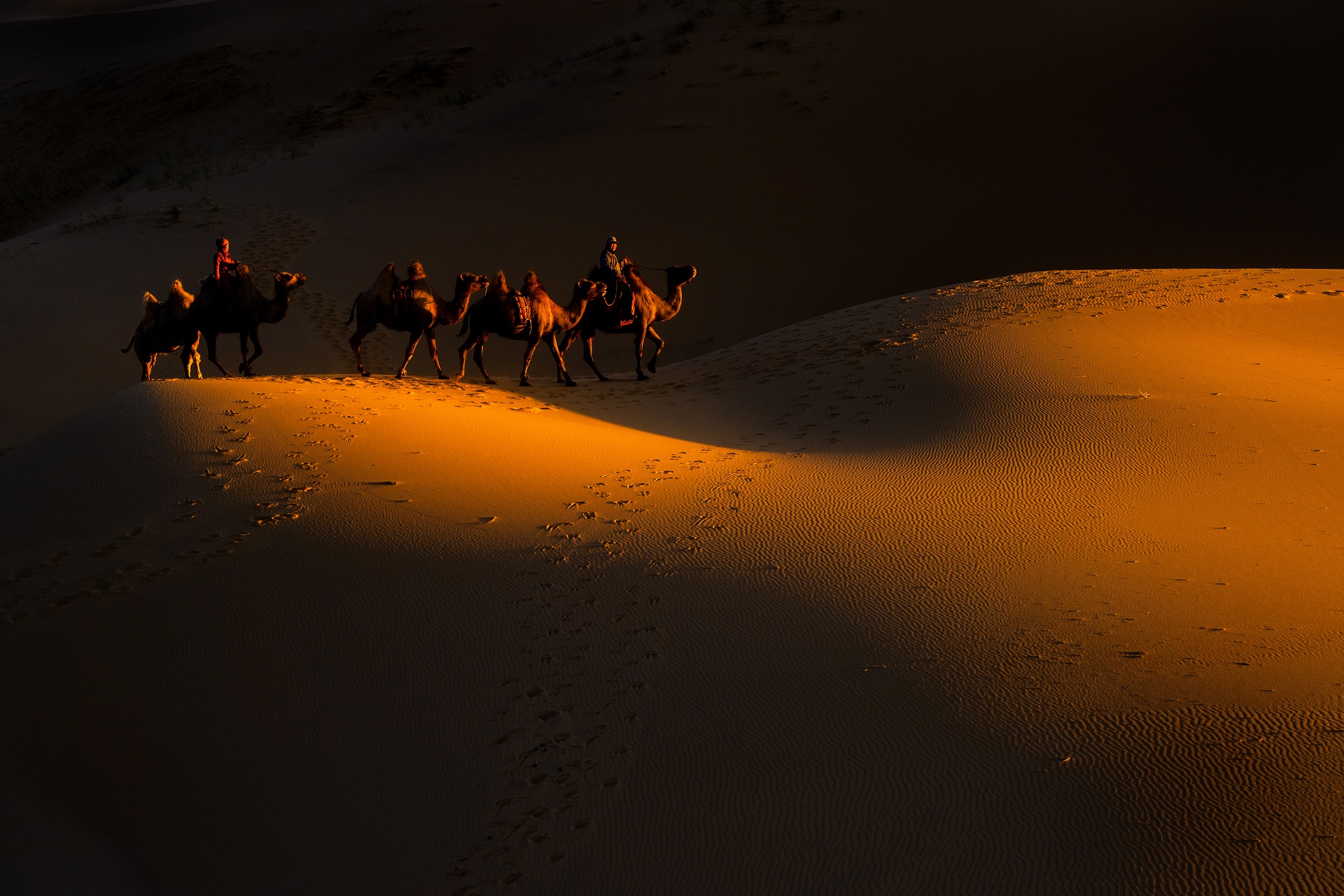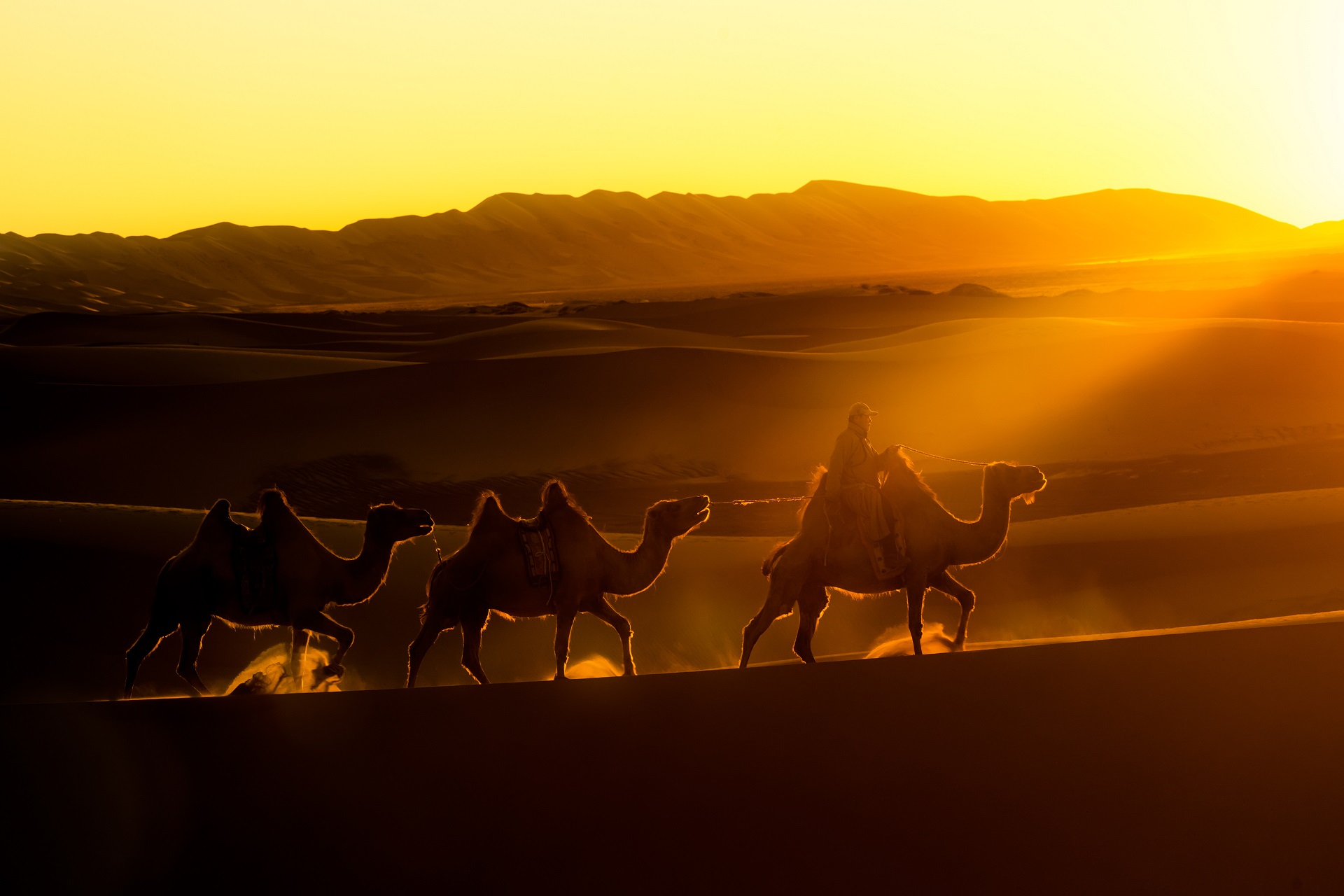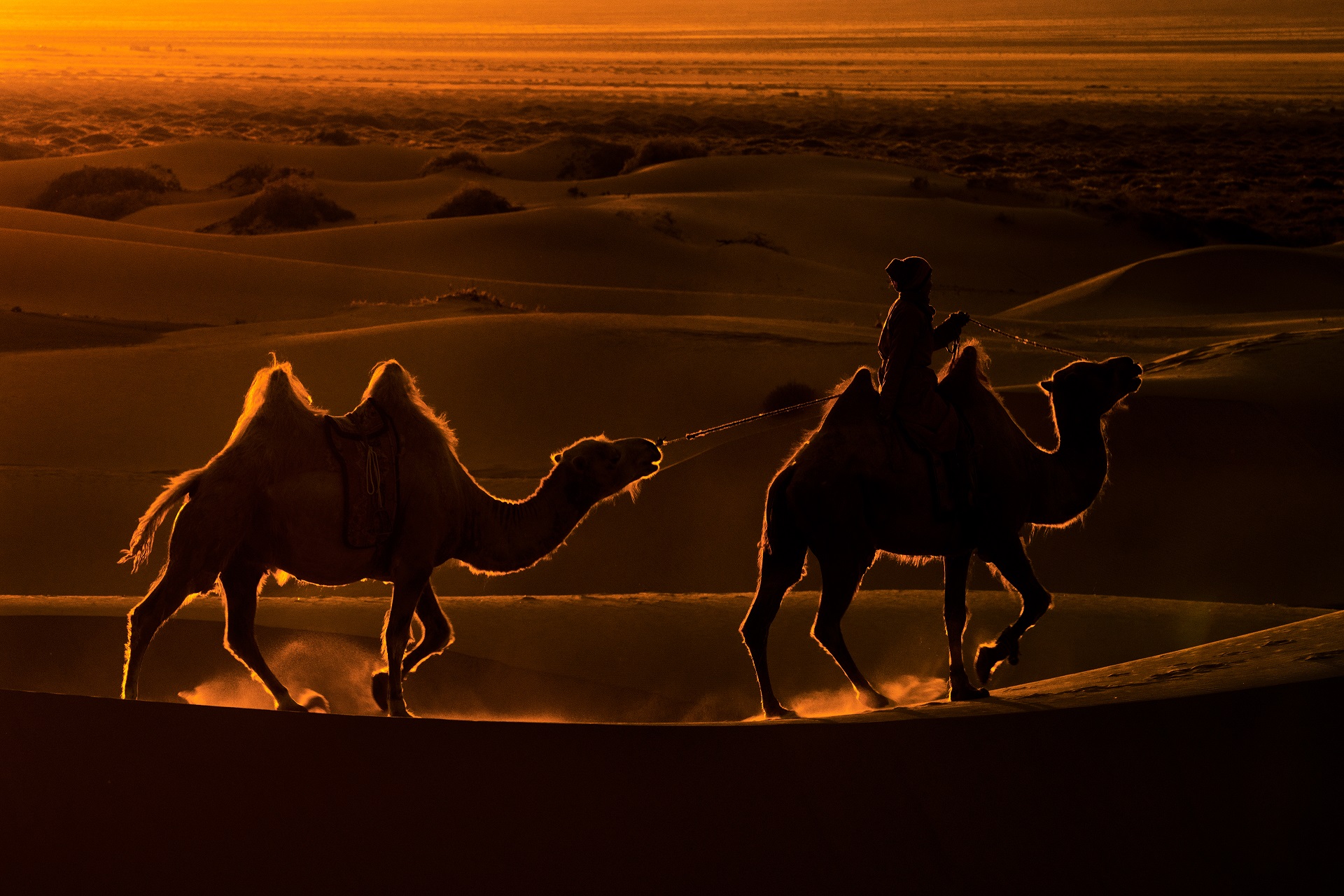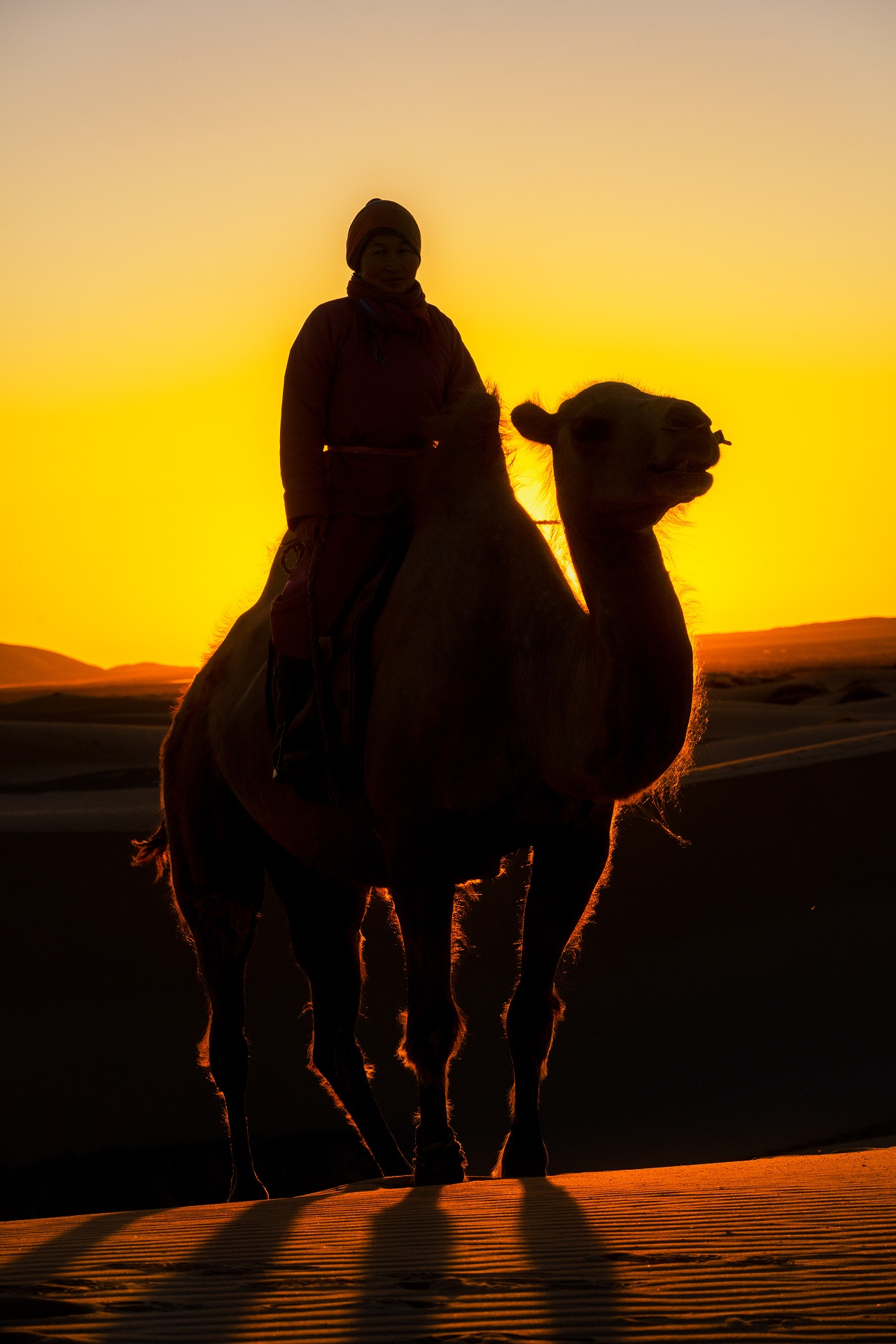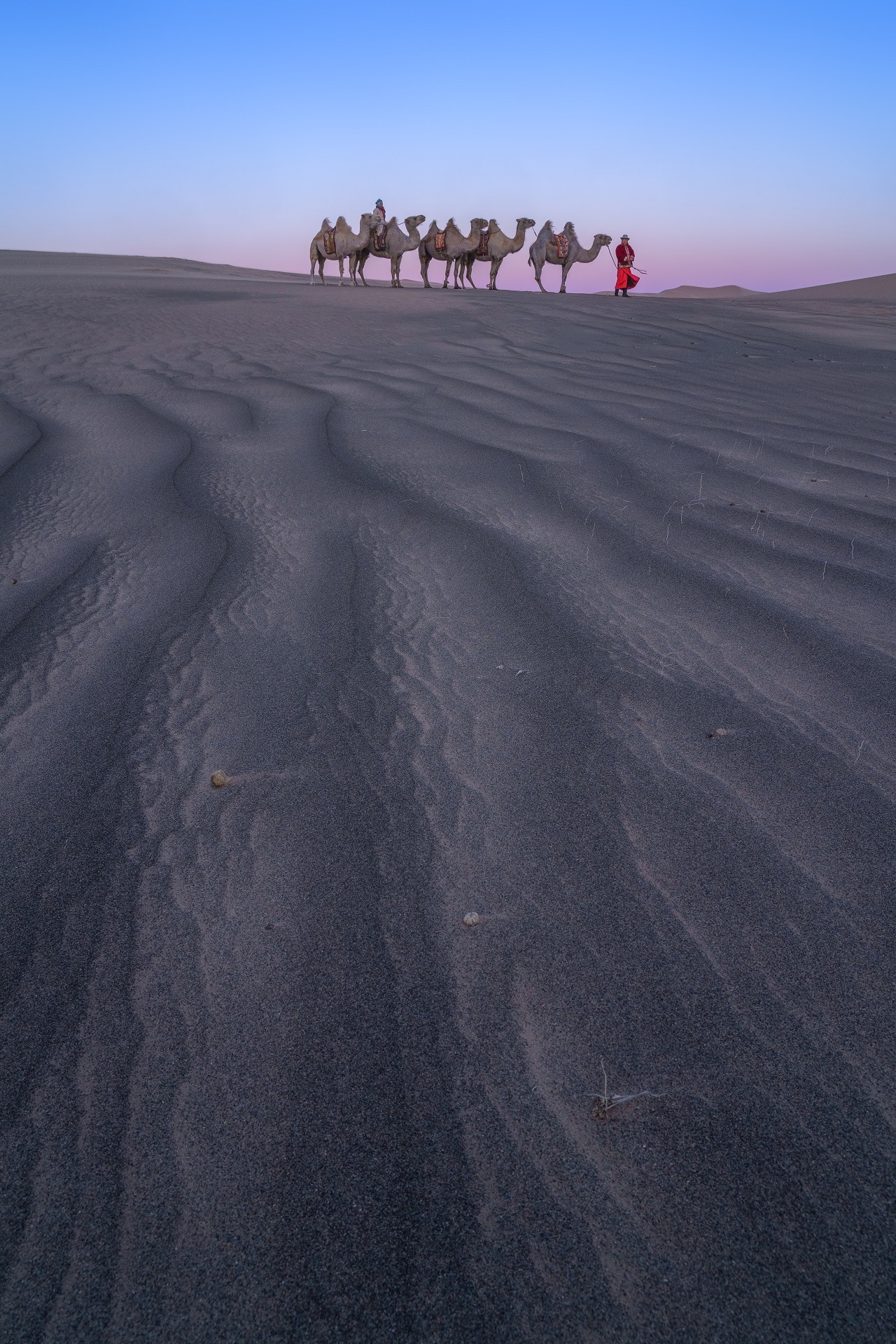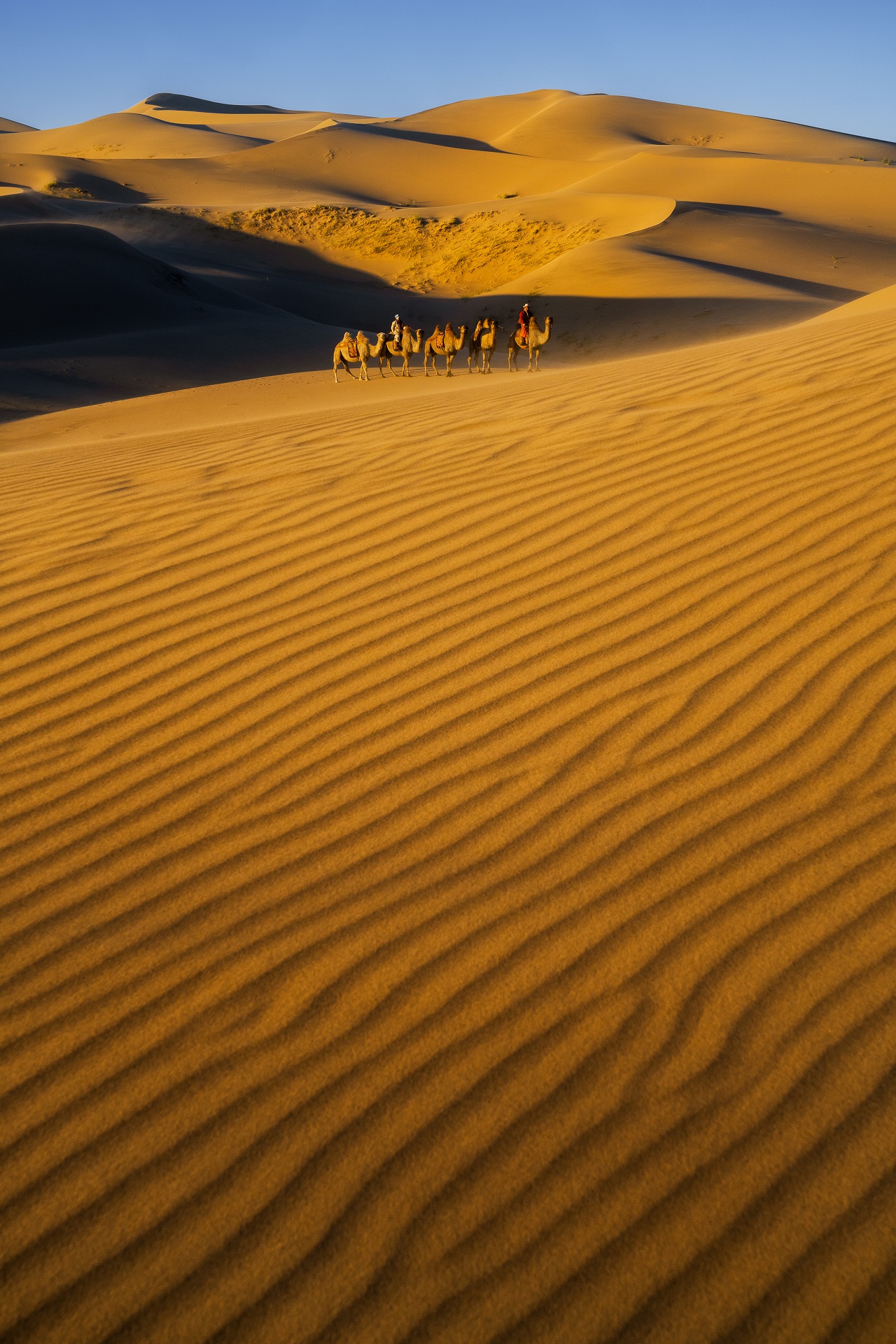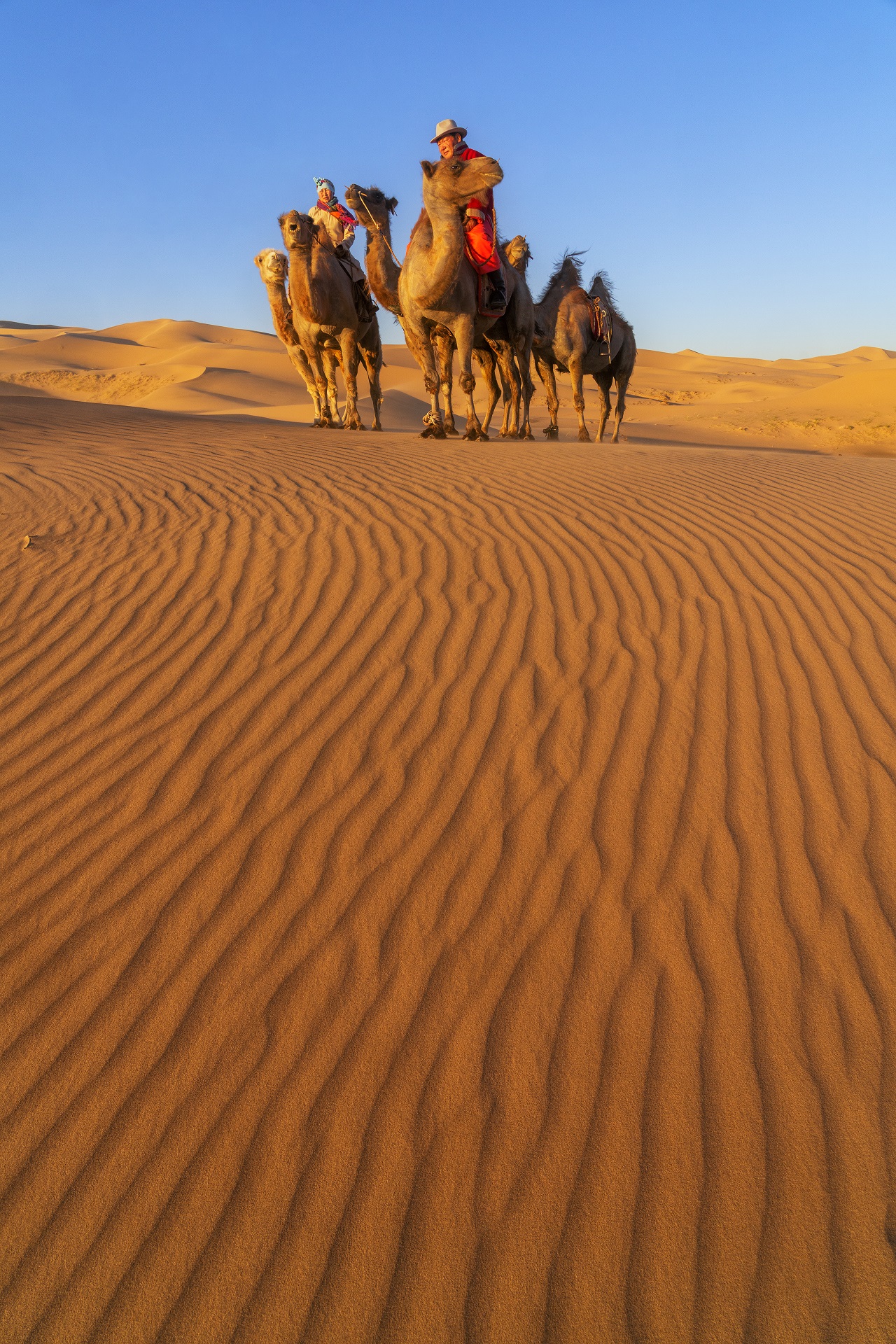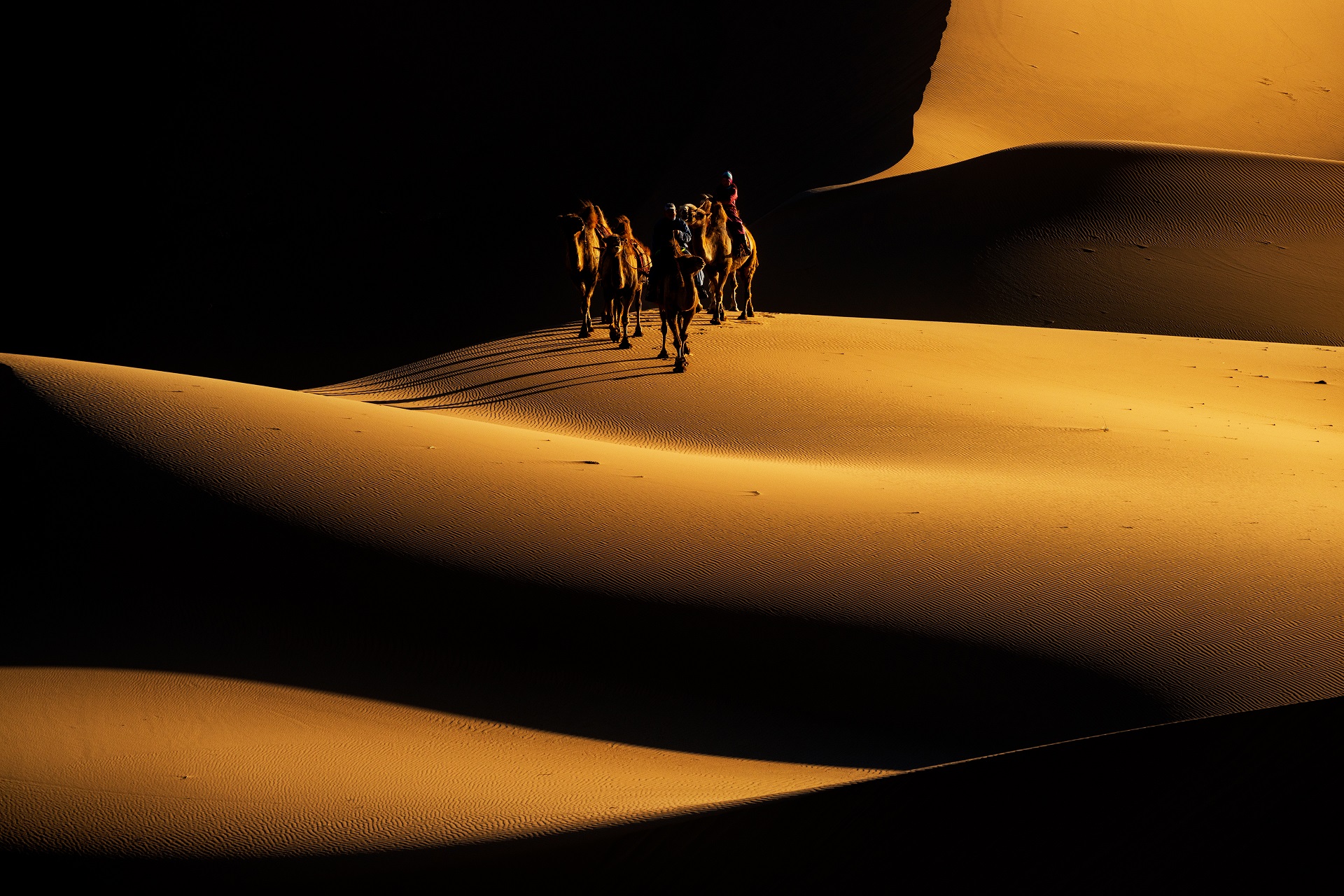
Khongor Sand Dunes are the largest and the most spectacular dunes not only in the Gobi Desert but in Mongolia, with the area over 900 square kilometers, and some dunes can reach the heights of 100 to 300 meters! The inhabitants here name the Khongor Sand Dunes as “Singing Dunes” due to the “roaring” or “blooming” noise when the sand grains move over one another in the windy condition.
Gobi Desert is one of the toughest places to live in the world and yet the double-humped Bactrian camels have lived here for thousands of years! Bactrian camels are native to the Gobi Desert. They are among the most adaptable creatures on Earth, as they can cope with drought, high altitudes, and extreme temperature between +40°C in the summer and -30°C in the winter.
There are two types of Bactrian camels live here, wild and domesticated. There are around only 800 wild camels remained and it is classified as Critically Endangered Species by International Union for Conservation of Nature (IUCN).
Domesticated Bactrian camels are a separate species from wild Bactrian camel. There are more than 250,000 domesticated Bactrian camels in Mongolia, mostly in Gobi. Domestic Bactrian camels have been one of the most important animals for steppe nomads since they were domesticated in 2500BC. They have served as pack animals in inner Asia since ancient times, and as a form of transportation on the Silk Road.
They served as transportation and can carry 170kg to 250kg (375lbs to 550lbs) for 47km (30miles) per day, they can travel for 30 days continuously without drinking a drop of water!
Their hairs are used for rope which encircles Ger camp. Their wools are used for garment and sock, a male adult camel can provide up to 18kg of wool per year. They also provide milk and meat.
In addition to their practical uses, the Bactrian camels are also a significant part of the Mongolian culture. The nomadic people of Mongolia have a deep respect for these animals, and they are often seen in Mongolian art and music. The Bactrian camel has become a symbol of the Mongolian way of life, and they are considered an important part of the country’s heritage.
